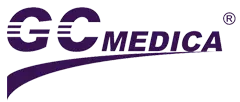-
Laparoscopic & Endoscopic Products
-
Laparoscopic Procedures
- Heated Insufflation Tube
- Laparoscopic Smoke Filter
- High FLow CO2 Laparoscopic Insufflation Filter Tube Set
- Veress Needle
- High Flow Heated Insufflation Tube
- Arthroscopy Irrigation Set
- Disposable Bladeless / Bladed Trocar with Thread / Balloon
- Disposable Wound Protector
- Disposable Height Changeable Wound Protector
- Retrieval Bag
- Laparoscopic Suction Irrigation Set
- Laparoscopic Insufflator
- Endoscopy Care and Accessories
-
Laparoscopic Procedures
- Respiratory & Anesthesia
- Cardiothoracic Surgery
- Gynaecology
-
Urology
- CathVantage™ Portable Hydrophilic Intermittent Catheter
-
Cysto/Bladder Irrigation Set
- M-easy Bladder Irrigation Set
- B-cylind Bladder Irrigation Set
- S-tur Bladder Irrigation Set
- S-uni Bladder Irrigation Set
- B-uro Bladder Irrigation Set
- Premi Bladder Irrigation Set
- J-pump Bladder Irrigation Set
- J-tur Bladder Irrigation Set
- H-pump Bladder Irrigation Set
- Sup-flow Bladder Irrigation Set
- Maple Irrigation Set
- Peony Irrigation Set
- Nelaton Catheter
- Urinary Drainage Bag
- Urinary Drainage Leg Bag
- Enema Kits
- Sitz Bath Kits
- Click Seal Specimen Container
- Silicone Male Catheter
- Spigot Catheter and Adaptor
- Sandalwood Irrigation Set
- Freesia Irrigation Set
- Daffodil Irrigation Set
- Single-Use Digital Flexible Ureteroscope
- Enteral Feeding Products
- Dental
- Fluid Management
- Warming Unit and Warming Blanket
-
Operating Room Necessities
- Nasal and Oral Sucker
- Disposable Medical Equipment Covers
- Magnetic Drape / Magnetic Instrument Mat
- Suction Handle
-
General Surgery
- Perfusion Atomizer System
- Gastric Sump Tube
- Surgical Hand Immobilizer / Lead Hand for Surgery
- Administration Set for Blood
- Ear/Ulcer Syringe
- Bulb Irrigation Syringe
- Toomey Irrigation Syringe
- Mixing Cannula
- Basin Liner/Basin Drape
- Medical Brush
- Sponge Stick
- Suture Retriever
- Needle Counter
- Disposable Calibration Tube
- Heparin Cap
- 100ML Bulb Irrigation Syringe
- Scleral Marker
- Surgical Light Handle
- Mucosal Atomization Device
- Durable Medical Equipment
- Patient Handling System
- PVC-FREE Medical Device
- Emergency
-
Patient Air Transfer Mattress Online WholesaleDec 17 , 2024
-
Cystoscopy Irrigation Set Online Wholesale | GCMEDICADec 17 , 2024
-
Patient Warming Device and Blanket Online wholesaleDec 16 , 2024
-
CathVantage™ Twist Intermittent Catheter | GCMEDICASep 20 , 2024
-
Single-Use Digital Flexible Ureteroscope | GCMEDICASep 20 , 2024
What is a Nasal Cannula? when to Use?
1. What is a nasal cannula?
In some cases, if the mouth or throat is being operated or injured and the breathing tube passes through the nose instead of the mouth, this is called a nasal cannula. The nasotracheal tube (NT) enters the nasal cavity and enters the upper airway along the back of the throat, which is to keep the mouth blank for surgery.
2. How to use the nasal cannula?
Before using the intubation, the patient is usually sedated or unconscious due to illness or injury, which allows the mouth and airway to relax. The patient usually has a flat back, and the person inserting the tube stands at the head of the bed, looking at the patient's feet. Gently open the patient's mouth and use a luminous instrument to make the tongue unimpeded and illuminate the throat and gently guide the nasal cannula tube to the throat and into the respiratory tract.
There is a small balloon around the tube, which can be inflated to keep the nasal cannula tube in place and prevent air from escaping. Once the balloon is inflated, the tube is firmly positioned in the airway and tied to the mouth or secured with tape.
3. The use of nasal cannula
Intubation is required for general anesthesia. After most operations, drugs are given to reverse the effects of anesthesia, which allows the patient to wake up quickly and start breathing on their own.
Nasal cannula is also used for respiratory failure. There are many reasons why a patient is too sick to breathe on their own. They may cause damage to the lungs, may have severe pneumonia, or have respiratory problems such as COPD. If patients cannot breathe in enough oxygen themselves, they may need to use a ventilator until they return to breathing without the need for help again.

